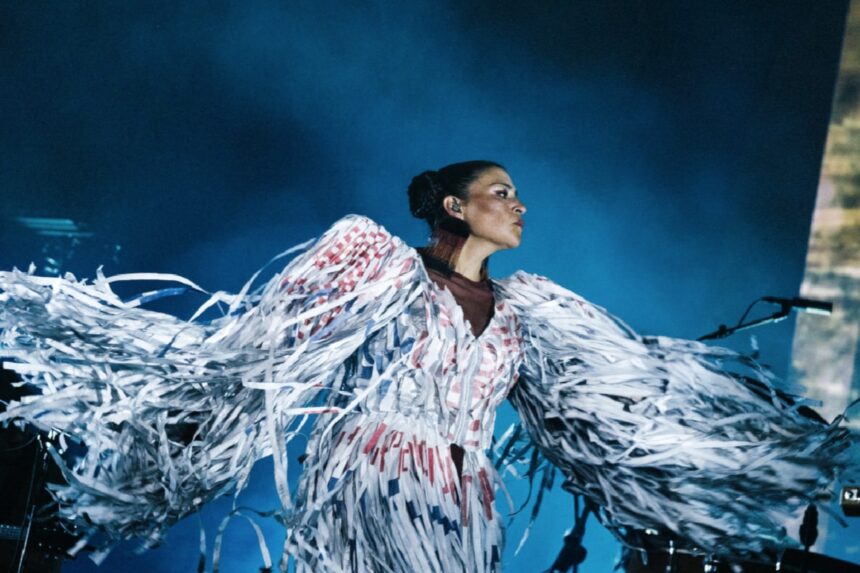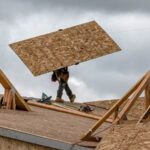The rhythmic pulse of hand drums echoed across the fairgrounds as the sun dipped behind the mountains on the second evening of the Salmon Arm Roots and Blues Festival. A circle of dancers moved in unison while hundreds of festival-goers watched in reverent silence, many experiencing Indigenous song and ceremony for the first time.
“This isn’t just performance—it’s medicine,” whispered Elder Jessie Nyberg to me as we sat cross-legged near the workshop stage. Her weathered hands kept gentle time against her knee. “When our young people see thousands of non-Indigenous folks honoring these traditions, something heals in them too.”
The 31st annual festival, running August 15-18 this year, has deliberately expanded its Indigenous programming, reflecting both a cultural reckoning in Canada’s music industry and the festival’s deepening relationship with the Secwépemc Nation, whose unceded territory hosts the beloved summer gathering.
Festival artistic director Kevin Tobin has spent three years building relationships with Indigenous artists and knowledge keepers. “We’ve moved beyond token inclusion,” he told me as we walked between stages. “About 30% of our lineup this year features Indigenous artists, but more importantly, they’re integrated throughout the festival experience—not segregated to a single stage or time slot.”
The festival’s Indigenous advisory circle, formed in 2020, has transformed how cultural protocols are respected. Opening ceremonies now feature traditional Secwépemc welcome and acknowledgment. Elders have permanent space in the festival’s quiet zone. Indigenous food vendors share traditional cuisine alongside the usual festival fare.
For Celeigh Cardinal, a two-time Juno nominee of Métis heritage whose soulful voice captivated the main stage crowd on Saturday night, these changes represent a sea change in Canadian festival culture.
“Ten years ago, we were the ‘diversity box’ that got checked,” Cardinal explained as we shared tea in the artists’ lounge. “Now we’re headliners, workshop leaders, and decision-makers. My nieces and nephews can see themselves reflected everywhere at festivals like this.”
The transformations at Roots and Blues mirror broader shifts across Canada’s cultural landscape. Statistics Canada reported in 2022 that Indigenous participation in arts festivals has increased 47% since 2015, both as performers and attendees. The Canada Council for the Arts has similarly increased funding for Indigenous arts initiatives by 35% over the same period.
But behind these encouraging statistics lies a more complex reality. The First Peoples’ Cultural Council notes that while music opportunities grow, 75% of Indigenous languages in British Columbia remain critically endangered, with fewer than five fluent speakers.
This connection between music and language revitalization was powerfully demonstrated during a Sunday afternoon workshop called “Songs of the Land.” Elders and youth from the Neskonlith band shared songs that incorporate Secwépemctsín language elements, teaching willing audience members simple choruses.
“Our songs carry our science, our history, our laws,” explained cultural teacher Thomas Pierre. “When you learn even a few words of our songs, you’re helping us keep something ancient and precious alive.”
For festival organizers, balancing commercial viability with cultural authenticity presents ongoing challenges. The festival draws approximately 30,000 attendees over four days, generating an estimated $4.2 million for the local economy, according to Tourism Salmon Arm.
“We’re running a business, but we’re also stewarding a relationship with this land and its original peoples,” said operations manager Cindy Diotte. “That means compensating knowledge keepers appropriately, creating space for ceremony that might not fit neatly into a stage schedule, and educating our audience along the way.”
This educational component happens subtly throughout the festival. Between sets, large screens display information about whose traditional territory hosts the festival. Program guides include proper pronunciation guides for Secwépemc words and explanations of cultural protocols. Workshop stages feature conversations about appropriation versus appreciation and the history of Indigenous music suppression through colonial policies.
The delicate dance between celebration and education was most evident during Saturday’s collaborative performance between electronic powwow group The Halluci Nation (formerly A Tribe Called Red) and local traditional dancers. Thumping beats merged with ancient songs while festival-goers danced alongside Indigenous youth in regalia.
“We’re not museum pieces,” DJ Bear Witness told the crowd between tracks. “Indigenous culture isn’t static—it’s evolving, incorporating new influences while staying rooted in values that have sustained us for thousands of years.”
This evolution was on display throughout the weekend. Audiences witnessed everything from throat singer Tanya Tagaq’s experimental collaborations with a string quartet to Snotty Nose Rez Kids’ politically charged hip-hop to Sierra Noble’s fiddle-driven Métis melodies.
Festival-goer Marianne Thomson from Kelowna admitted she initially came for the big-name folk and blues acts but found herself transformed by the Indigenous performances.
“I’ve lived in BC my whole life but never really understood the depth and diversity of Indigenous cultural expressions,” she said, her eyes welling up. “I’m ashamed it took me 62 years to listen this closely.”
As the festival concluded with a community drum circle led by multiple generations of Secwépemc families, the boundaries between performer and audience, Indigenous and non-Indigenous, seemed momentarily permeable. Hands of all ages and backgrounds joined in keeping rhythm together.
Salmon Arm’s festival represents a microcosm of a broader reconciliation journey unfolding across Canada’s cultural institutions. It’s neither perfect nor complete, but as Elder Jessie Nyberg reminded me while watching the final sunset over the festival grounds: “Healing happens in circles, not straight lines. We’re making a circle here that keeps getting wider.”






